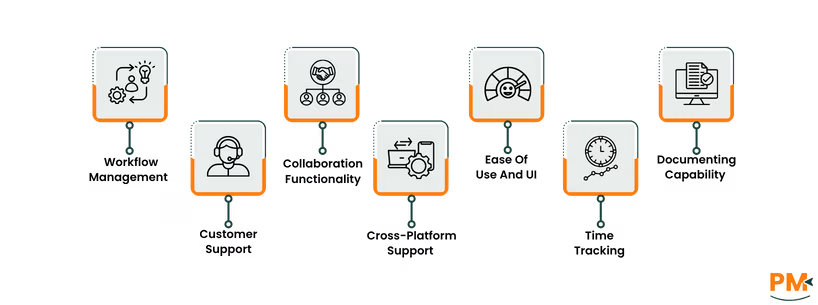
Choosing the right customer support software isn’t just about ticking boxes—it’s about finding a tool that actually works for your team, your workflow, and your customers. Zendesk and Zoho Desk are two big names in this space, but they come with different strengths, quirks, and price tags.
Zendesk is a long-standing heavyweight known for its robust ticketing system and clean, customizable interface. It’s geared toward scaling support teams and enterprises that need flexibility and integrations. Zoho Desk, on the other hand, is part of the larger Zoho ecosystem and offers impressive value—especially for smaller teams or those already using Zoho apps.
This comparison breaks down how both tools perform across features, usability, pricing, and more—so you can make a decision based on facts, not fluff. Let’s get into it.

Zendesk is a cloud-based, omnichannel support platform designed to manage customer inquiries across email, chat, phone, and social media. Built around a powerful ticketing system, it includes automation tools, a customizable knowledge base, and advanced analytics — all aimed at scaling support teams efficiently.
Zendesk Pros And Cons
Pros
- Robust Omni‑channel Ticketing: Seamlessly consolidates email, chat, phone, social—and gives each ticket an ID for tracking and SLA management
- Extensive Integrations And API: Over 1,000 integrations (Salesforce, Slack, Google Analytics) plus a developer-friendly API for custom workflows
- Automation Power: Advanced triggers, macros, routing workflows streamline support operations
- Highly Scalable: Offers tiers from Team to Enterprise, making growth and upgrades seamless
Cons
- Steep Learning Curve: Rich features come with complexity—onboarding can take time and effort
- Limited Exports: Exporting ticket data isn’t available in lower-tier plans
- Advanced Features Only At Higher Levels: Things like advanced forms, community forums and advanced voice capabilities are only available in pricey tiers

Zoho Desk is an omnichannel, cloud-based help desk platform part of the Zoho One suite. It offers ticket management, automation, a built-in knowledge base, AI assistance (Zia), and seamless integrations with Zoho CRM and many third-party tools. Geared toward small- to medium-sized businesses, it stands out for its value-driven pricing and strong customization options.
Zoho Pros And Cons
Pros
- Strong Support: Handles email, phone, chat, social media, and integrates smoothly with a wide range of Zoho and third-party apps
- Powerful Automation And Customization: Offers workflow rules, blueprints, macros, and AI-powered Zia for smart routing and response suggestions
- Robust Knowledge Management: Includes branded help centers, community forums, and accessibility features like screen readers
- Deep Integration Within Zoho Ecosystem: Tight collaboration across Zoho apps, making it easy to sync CRM, Projects, SalesIQ, and more
Cons
- Interface Can Feel Cluttered Or Outdated: Some reviews describe the UI as confusing or slow to navigate
- Advanced Features Gated At Higher Tiers: Live chat, AI tools, multi-brand portals, and advanced workflows fall under pricier Enterprise plan
- Customer Support Complaints: Some users report poor responsiveness and troubleshooting, particularly in lower-tier plans

Zendesk
Zendesk leans heavily into ticket-centric automation using triggers, macros, and SLA reminders rather than built‑in task lists. Agents can create custom triggers to assign, tag, or notify team members based on ticket attributes and use macros to standardize repetitive actions—like replying, changing status, or adding tags—with a single click. Zendesk also supports automation workflows that can follow up on stale tickets or close them after inactivity, which helps prevent issues from slipping through the cracks. However, if your team needs proper task lists or checklists tied to tickets, you'll have to rely on marketplace apps or build custom API solutions to create tasks and integrate with tools like Salesforce . In short, Zendesk is excellent for ticket automation but minimal when it comes to native task management.
Zoho Desk
Zoho Desk takes a more unified approach to tasks and workflows. The platform supports workflow rules that don’t just set ticket assignments or status changes—they can also create native tasks tied to tickets, complete with due dates, reminders, and team assignments. With Zoho Flow, you can connect Desk to other apps like Projects, ClickUp, or Teamwork, to generate tasks automatically in those systems whenever a ticket is created or updated. At the Enterprise level, Zoho Desk adds Blueprints—a visual, multi‑stage workflow builder that lets you create structured processes (e. g. , “pending approval” → “assign to tech team” → “SLA escalation”) with defined SLAs at each step. While Flow and scripting via Deluge require some setup, the payoff is smoother task workflows without relying on external apps.
Zendesk
Zendesk is built for seamless, multichannel customer support. Its platform consolidates email, chat, phone, social media, and even AI-driven self-service into a single, sleek interface. Agents benefit from fast setup; deploying Zendesk takes days, not months, and agents can become productive in just a few hours. Its AI, recently showcased at Relate 2025, automates up to 80% of routine interactions—freeing agents to focus on complex issues. Support options include an in‑product chatbot (Z Bot), a robust help center, and live chat with human agents when bots can’t resolve an issue. Although the platform is comprehensive and scalable, its support quality varies depending on the vendor using Zendesk—some organizations complain about delayed or impersonal responses, especially if the AI misroutes issues.
Zoho Desk
Zoho Desk delivers strong core support features with ticketing, omnichannel capabilities (including social and phone support), and a well-built knowledge base. AI-powered Zia assists with sentiment detection, automated suggestions, and summaries, boosting agent efficiency. The platform is praised for value and flexibility, though users warn that essential features like private notes and live chat are locked behind enterprise-tier plans. Customer service from Zoho draws polarizing reviews: some users find the support lacking or slow. On the flip side, a strong contingent of companies love Zoho's omnichannel integration and customization.
Zendesk
Zendesk focuses heavily on internal team collaboration within the context of ticket management. Agents can leave private notes on tickets, tag teammates, and use side conversations to communicate with external or internal stakeholders without cluttering the main ticket thread. These side conversations are particularly handy for involving departments like IT or legal without derailing the customer-facing interaction. However, more advanced collaboration—like light agents, multi-party discussions, or integrated Slack-style threads—often requires upgrading to higher-tier plans or using third-party integrations. It works well for support-heavy teams but may feel limited if you're looking for fully built-in project or task collaboration.
Zoho
Zoho Desk offers a more layered collaboration setup, especially if you're using it alongside other Zoho tools. Within tickets, agents can mention colleagues, add comments, and share updates. The Team Feed functions a bit like an internal social wall, where updates, alerts, and announcements can be posted. Agents can also assign tasks and escalate tickets within departments using built-in workflows. If you're plugged into the broader Zoho ecosystem (like Zoho Projects), collaboration becomes even more seamless, extending beyond just support tickets. Overall, Zoho leans toward more holistic internal teamwork, especially for cross-functional teams.
Zendesk
Zendesk offers strong cross-platform compatibility. Its agent interface is accessible via modern web browsers, with dedicated mobile apps available for both iOS and Android. These apps allow agents to view, update, and respond to tickets on the go, though some complex admin-level functions may be limited. Zendesk also supports integrations with desktop tools like Slack, Microsoft Teams, and CRM platforms, ensuring continuity across devices and ecosystems. The UI is responsive and optimized for performance across both desktop and mobile environments, which is crucial for teams handling support 24/7.
Zoho
Zoho Desk is also well-optimized for cross-platform access. Users can manage tickets via desktop or mobile (iOS and Android), with a responsive web app that functions smoothly across browsers. Mobile capabilities include push notifications, voice ticket updates, and quick replies, though configuration settings are more robust on desktop. Where Zoho stands out is its native integration with other Zoho apps—whether you're on mobile or desktop, the experience remains unified. Teams that juggle multiple apps for CRM, projects, or HR within Zoho’s ecosystem will find the cross-platform fluidity especially useful.
Zendesk
Zendesk’s interface is sleek, structured, and purpose-built for support workflows. It offers a clean, tab-based layout where agents can handle multiple tickets simultaneously. The learning curve is relatively shallow for standard users, with workflows and macros making repetitive tasks faster. However, as you dive into more advanced automations, custom triggers, and reporting dashboards, things can get more complex. Admins might need time to fully leverage all the backend settings, but for daily ticket handling, the UI is intuitive, responsive, and clutter-free. Mobile usability is solid too, although bulk actions and in-depth configurations are easier on desktop.
Zoho
Zoho Desk has a modular interface that balances customization with usability. The layout is not as minimalist as Zendesk's but offers more dashboard widgets and views right out of the gate. Navigation is straightforward, and agents can personalize their workspace with filters, ticket views, and quick-access panels. While this flexibility is great for experienced users, beginners may feel slightly overwhelmed by the number of options at first. That said, tooltips and contextual help do a decent job guiding new users. When paired with other Zoho apps, the consistency across interfaces helps maintain familiarity across platforms.
Zendesk
Zendesk doesn’t come with built-in time tracking, which can be a drawback for teams needing accurate service hour logs. However, time tracking can be added via third-party integrations like Harvest or Time Doctor, or through Zendesk’s own Time Tracking app from the Zendesk Marketplace. These solutions allow agents to log time manually or automatically as they handle tickets. That said, native support would make things smoother, especially for teams tracking billable hours or managing SLA compliance.
Zoho
Zoho Desk includes built-in time tracking, letting agents log the time spent on each ticket either manually or via timers. Admins can view these logs in reports and use them for billing, productivity analysis, or SLA monitoring. This feature is especially useful for service-based teams or those handling client contracts with time-based deliverables. Because it’s built into the system, there’s no need to rely on third-party tools, and time logs integrate seamlessly with tickets and agent performance dashboards.
Zendesk
Zendesk includes a robust knowledge base feature called Zendesk Guide, which allows teams to create, manage, and publish support articles for both customers and internal staff. It supports categories, tags, version history, and user permissions, making it easy to structure documentation by audience and role. You can also embed media, link related articles, and use AI-powered suggestions to surface relevant help content during ticket resolution. However, the more advanced features—like article analytics, content queues, or multi-brand help centers—are only available on higher-tier plans. It’s powerful, but you’ll need to pay more to unlock its full potential.
Zoho
Zoho Desk comes with a built-in Help Center that lets you publish FAQs, how-to articles, and support documentation for customers. It supports rich formatting, custom domains, and multilingual content out of the box. Internally, agents can access articles directly from the ticket view, improving response speed and consistency. Compared to Zendesk, Zoho’s documentation tools are slightly more limited in terms of advanced analytics and AI suggestions, but they cover the basics well—especially for small to mid-sized teams. If you're also using Zoho Writer, syncing help content between platforms is easy and seamless.

Zendesk pricing starts at $25/agent/month for the Support Team plan, which covers ticketing, email, social messaging, macros, and basic reporting. For omnichannel support (email, chat, voice, social) with AI agents and knowledge bases, the Suite Team plan is $69/agent/month. Scaling up, and Suite Professional is $149/ agent/month—each tier unlocking features like SLAs, custom reporting, skills-based routing, HIPAA compliance, and analytic dashboards. Enterprise-grade customization and collaboration tools are available at custom pricing . Zendesk also offers valuable add-ons like CoP\pilot ($50), Workforce Management ($25), and Quality Assurance ($35)/agent/month .
Zoho offers two flexible pricing models tailored to organizational needs: All Employee Pricing and Flexible User Pricing. With All Employee Pricing, you pay $45/employee/month (billed monthly) or $37/employee/month (billed annually), and this covers the entire staff, unlocking access to over 45 integrated apps like CRM, Desk, Projects, and more . Alternatively, the Flexible User Pricing option lets you license only the team members who need access—at $105/user/month (monthly) or $90/user/month (annually). Both plans give you the full suite of apps and core functionality, but the All Employee model is more cost-effective for organization-wide deployment, while Flexible User offers precision and flexibility.
Who Is Zendesk Best For?
Zendesk is ideal for organizations that need scalable, enterprise-grade support with robust ticketing, AI, and analytics. It works well for midsize to large companies in industries like e-commerce, tech, finance, and healthcare—especially those managing multichannel customer interactions across email, chat, phone, and social media. Quick deployment (days, not months) and an intuitive agent workspace make it attractive to teams that want fast, seamless onboarding. Zendesk also excels for businesses looking to customize heavily via APIs, pre-built integrations, or advanced workflow tools. From high-growth startups to large enterprises, Zendesk fits those prioritizing deep automation, AI-powered self-service, and detailed analytics.
Who Is Zoho Best For?
Zoho Desk shines for SMBs and growing mid-market teams that want integrated support with strong value. It’s particularly suited to organizations already within the Zoho ecosystem (CRM, Projects, Campaigns)—offering built-in task tracking, AI automation (Zia), and multibrand portals at competitive prices . With customers spanning 10–50 employees, Zoho Desk is praised for its satisfaction ratings and flexible feature set. It's ideal for businesses seeking a unified workflow with minimal need for add-ons, and who can tolerate some setup complexity in exchange for cost-effective, fully-featured support.
Which One Should You Go For?
Choose Zendesk if your team needs enterprise-level capabilities like AI-powered routing, deep analytics, omnichannel workflows, and extensive customization—especially if you’re handling large ticket volumes or complex customer journeys. Its strength lies in performance, scalability, and flexibility.
Go with Zoho Desk (or Zoho One) if you're after cost-effective support for small to mid-sized teams, with solid ticketing, built-in time tracking, AI assistance, and multibrand support included at lower costs. Especially valuable if you want a unified stack of apps without the complexity—or price tag—of standalone tools.
